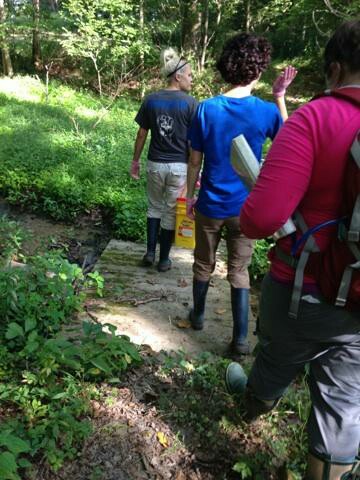Since 2005, the university has owned a $2.2 million outdoor learning facility called Primmer. With this facility, students have access to white-footed mice, bald eagles, and Kitric fungus to conduct research.
Primmer, located in Logan, Ohio, contains seven ecosystems, bald eagle nests, a beaver dam, and many more within its 74 acres that students study to gather field experience. The seven ecosystems at Primmer are wetland and Heron Rookery, Riparian Forest, Hocking river system, temperate deciduous forest, groundwater springs and streams, warm-seasoned grass pastures, and pine and spruce plantation.
Tori Hanlin, senior biology student and past recipient of the Boyd Fund, has had the opportunity to visit the site since her first year at Capital. Since first using the center, Hanlin adopted a project that previous students had started. Hanlin has primarily worked on researching the white-footed mouse.
In the past, biology and chemistry students have used Primmer to research white-footed mice and the amphibians. In recent years, students have studied how the Kitric fungus makes it difficult for amphibians to breathe through their skin.
A few students have presented their research from Primmer at the annual Undergraduate Symposium. Hanlin has done extensive work with the white-footed mice and amphibians. The researchers have gained experience by setting up traps and studying the mammals and amphibians that reside at the center.
The students now have motion censored trap cameras to take pictures of the wild life.
In regard to what students could study, Hanlin said, “People could do research on insects, fungus, or birds like the eagles’ or cranes’ nests. Some have tried to do turtle trapping … because we have the giant pond out there. It would be interesting to study the white-nosed syndrome in bats or even the plant species. There are tons of things that you could and look at.”
Areas of focus that could benefit from the site are ecology, biology, environmental science, chemistry, humanities, geology, and art. Because the site is relatively new to the university and not many students know about the site, there are many projects that students could conduct at Primmer.
Most of the researchers visit the site during the summer to avoid the conflict of missing classes because Primmer is roughly 45 minutes away.
Margaret and Merl Primmer donated Primmer Learning Center. In 1996, the Primmers made the decision to give the property to Capital once they passed away. In 2005, they officially signed over the property.
The Primmers supported Capital University for many years. In regards to the property, they said, “In gratitude for the values that Capital University has instilled in generations of students … we respond with a gift of real property … [for] an outdoor learning center … which shall be used for creative learning opportunities and research of a biological nature … to be used primarily for, but not limited to, students, faculty, alumni staff, and friends of Capital.”
In 2012, a committee comprised of faculty and administration made plans for the future development of the center. There were plans to make a main facility, paths to walk, and many more accommodations.
Currently, most visitors follow dirt paths made by deer, and the only facility is an old wooden barn that has limited space. Since the plans were made, no construction or renovations have been made to the site.
Students interested in conducting research at the site need to seek out a faculty mentor. Christine Anderson, professor of biology at Capital, is the main faculty member that deals with Primmer. She is currently on sabbatical.
More student involvement will help benefit the future of the learning center, said Hanlin. Because students and faculty visit only so often, garbage and litter can accumulate at the site. Hanlin advocates for organizations to use Primmer as a way of doing community service. She suggests students band together to clean the land once or twice a semester.

